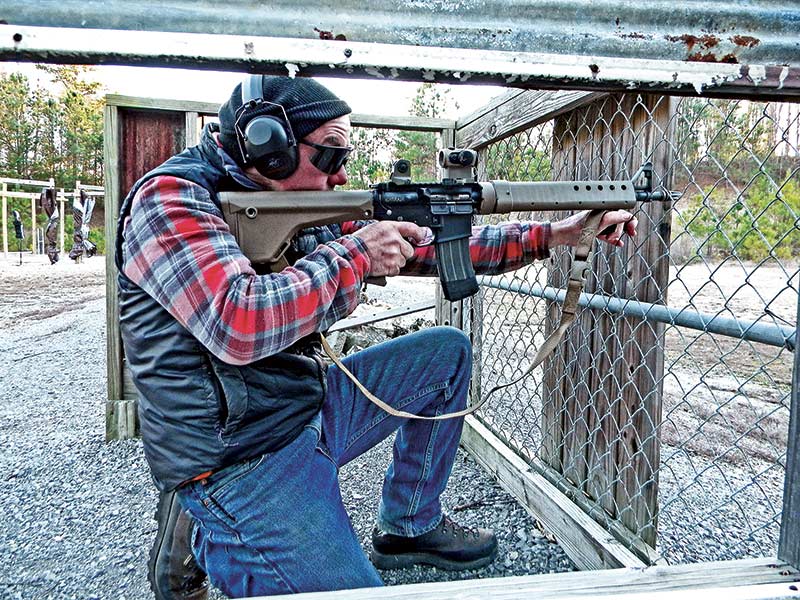Being Un-Tactical
Handgun readers include law enforcement, security and military personnel, but the vast majority of us are armed citizens. Our responsibilities are limited to protecting “kith ’n kin.” We’re not combatants performing tactical operations taking down terrorists to save the world. Self-defense isn’t “tactical,” as in a carefully planned action toward a military objective. Self-defense, regardless of current trends in the training world, is actually very “un-tactical.”
In 1976 Jeff Cooper founded the American Pistol Institute, the first commercial training center of its type. A.P.I, which became Gunsite, provided training to armed professionals and law-abiding citizens wishing to develop their defensive skills.
Many of Cooper’s instructors, such as Clint Smith, Chuck Taylor and Louie Awerbuck established their own schools. Most all these guys were ex-military, but still taught based on Cooper’s “Modern Technique” for the pistol, although with slight variations. For example, Clint Smith applied these principles to his Urban Rifle doctrine, using the AR15 for defensive purposes, for us “regular” people and law enforcement too.
Then came the war on terror, a long conflict. Special forces guys retired from the military, joining the civilian market as firearms instructors. AR15’s became popular, cool and “sick.” “Tactical” and “operator” and various military acronyms became the new buzz words. Everyone — including armed citizens — jocked up in war belts, chest and thigh rigs to run drills simulating major military and law-enforcement engagements like the North Hollywood bank robbery and other infamous gunfights. Students of these classes began teaching to others — often without understanding the origins of these skills and the “why” of their very specific applications.
Your Actions
The problem is very little, if any, of this “tactical-ness” applies to concealed carry and self-defense. There’s a universe separating “offensive” military tactics, those used by law enforcement and those used for personal protection — the category containing most of us.
As an armed citizen your response to danger should be to move. You create distance, move to cover or an exit, while issuing verbal commands and drawing your weapon. These actions may produce a “psychological” stop; you’re not the victim they thought you were and the threat(s) retreats.
You won’t be kitted-up in tactical gear. You’re lucky if there’s time to grab a rifle and shove a spare magazine in your pocket. There’s a lot of reasons you shouldn’t even loop the rifle’s sling around your body. Most likely you’ll be fighting with your handgun and one reload. Your goal is to break contact as soon as possible, escaping or forcing the threat(s) to leave.
It may be necessary to clear a building during an escape, or search for a loved one. It will be slow, deliberate tactics as opposed to the “shock and awe” of an aggressive, dynamic entry.
If absolutely necessary — after doing everything possible to avoid this — you shoot to stop the threat. You are not shooting to kill! Yes, you’re engaging the center mass of the chest, pelvis or head to stop them as efficiently as possible. There is a possibility they may die, and that’s between them and God. But, your intent is not to kill.
Chances are you’ll only fire three to five rounds. Yes, there are exceptions, but that’s the round count seen in the majority of defensive encounters. You probably won’t have to reload. Every action is defensive, and you’ll have to explain exactly what you did — and why.
Your Responsibilities
The defensive application of force in response to a threat is an acquired skill. None of these actions — moving, communicating, using cover, shooting if necessary and the mental skills to solve the problem — are instinctual or natural. If you own a firearm for self-defense you need to attend training to understand and apply these skills.
Take plenty of time to research and study, searching for the proper type of school and instructor. Remember, you’re not a “warrior.” I recently saw a “defensive” class advertised with the word “Killing” in its title. I’m not sure about the rest of the world, but ’round here planning to kill is called “premeditated homicide.” Aggressively pursuing a threat to put ’em down turns you into the attacker. Now you’re the criminal facing prosecution.
Training must be realistic and defensive in nature. Luckily there are plenty of options. After training comes practice. The real learning occurs through repetition.
The best thing you can practice is “humbleness.” Many have heard the saying, “An armed society is a polite society,” but few understand its meaning. As an armed citizen you’re polite to everyone, regardless of how they behave. You don’t get into a verbal or physical exchange where you’re forced to use a weapon. Your immediate response to danger is avoidance or escape. The only reason you fight is because it’s worth risking your life — and that should be a short list. And if forced to shoot, you shoot to save life, not take it. All of this is very un-tactical.







